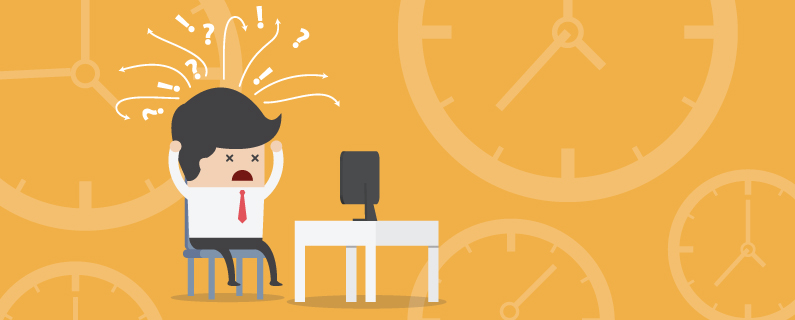
No one, aside from maybe a racecar driver, wants to feel rushed in their job. Even designers, many who are used to working in a fast paced environment, know that a good outcome takes time.
However, that being said, %#*& happens.
Sometimes there is no way to avoid a rush design project. Last minute changes happen and unplanned opportunities arise. There are ways to avoid a quick turnaround disaster, but they require flexibility and compromise from both the designer and the client.
CLIENT TIPS:
Get Started:
As soon as you know you’re in need of quick design work, get moving. Put together a thorough description of the project, (including deadlines) and have any branding, graphics or specs. ready to go. The second you have these components, get in touch with a designer. The more time they have, the better the end results will be.
Accept Costs:
More often than not, a rush design job will cost more. Not only does the designer have to rearrange their workload in order to accommodate your project, but they often have to coordinate with other vendors, sponsors, designers, etc., who are in turn modifying their own schedules. Most printers add on rush fees of their own, due to the interruption of their production schedules.
Be Available:
Now would be a truly awful time to go on vacation. The successful completion of the project often depends on the timeliness of feedback. Think of it like a relay race. The most successful teams are those where each member is ready and anticipating the next hand off. When your designer sends you something requiring feedback, you want to be prepared and able to quickly proof and send it back without too much time passing.
DESIGNER TIPS:
Plan Ahead:
Before you even get started on the project, contact any other vendors or designers who you will be working with. For instance, if your client is requesting an expedited turn around for a print job, by all means do not wait to contact the printer until after everything is approved. Just as you appreciate a heads up that a quick project is coming, so will the printer.
Communicate Schedule:
One of the best ways to schedule out a rush design project is to work backwards. Get out your calendar and mark important deadlines such as the finished project date, shipping dates, printing/manufacturing turn around and, of course, time for designing and feedback. As soon as you’ve created a realistic schedule, share those important deadlines with the client. Let them know that the project depends on each of those milestones being hit on time.
Streamline:
There simply isn’t time for a bunch of back and forth with the client and getting hung up on small details. Your process needs to be stripped down to the essentials. This may mean sending less designs to choose from, or limiting the number of revisions. Often steps in the design process can be combined in order to save time. If a project includes several different elements, it may be more efficient if all the elements are designed and sent to the client to proof at once. Be thorough in your descriptions and clear about what feedback you need from the client in each round.
EVERYONE TIPS:
Great designs take time and a whole lot of planning, so when those more relaxed circumstances aren’t an option, the results can vary. The most important thing is communication. Both the designer and the client have to be clear about what they need, and responsive and understanding in their interactions. In an ideal world, all projects would get a sufficient amount of time to complete, but the truth is they sometimes don’t, and everyone just has to make the best of the time and resources they have.
Roundpeg is an Indianapolis graphic design firm.

